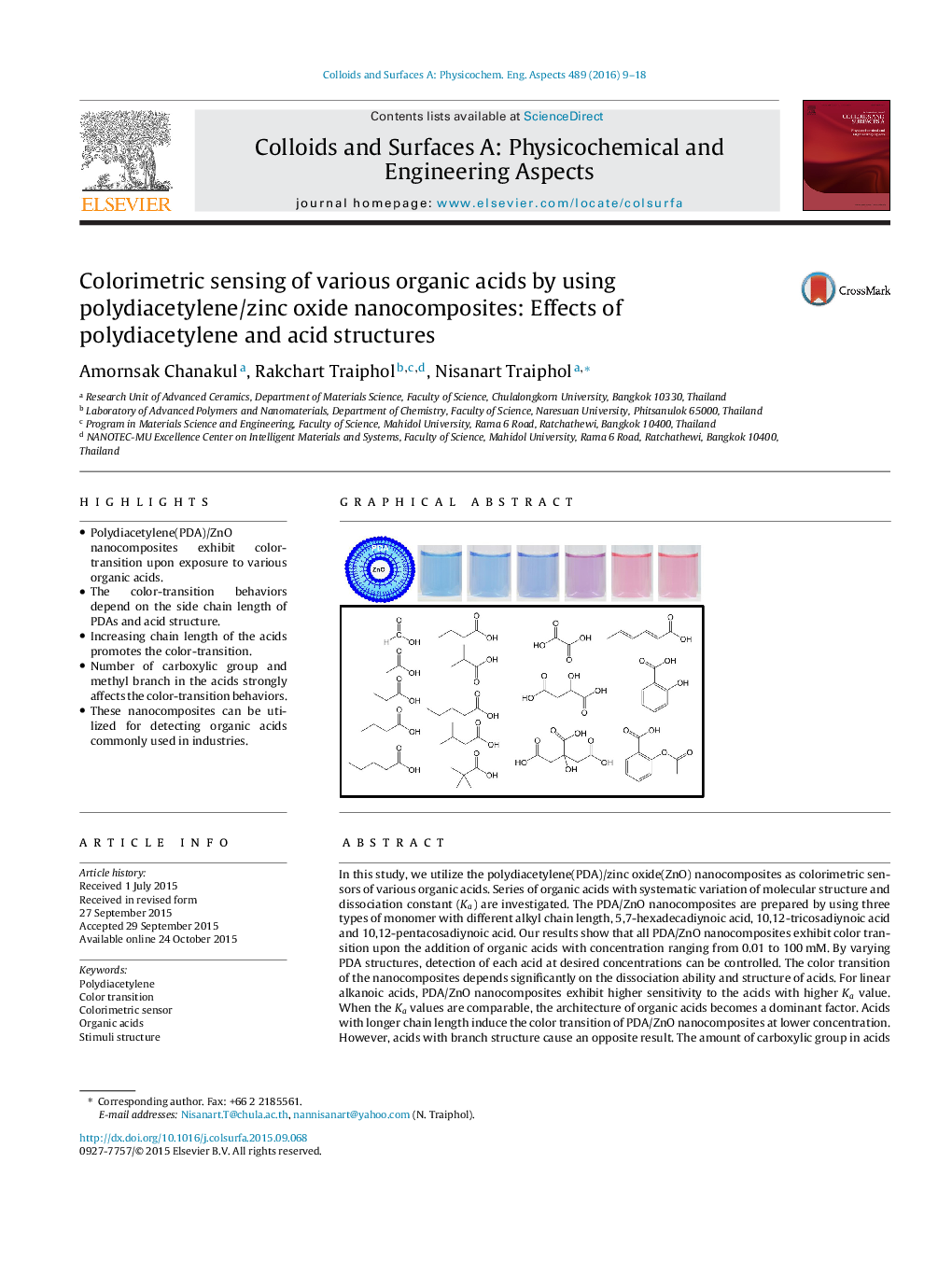| کد مقاله | کد نشریه | سال انتشار | مقاله انگلیسی | نسخه تمام متن |
|---|---|---|---|---|
| 591863 | 1453884 | 2016 | 10 صفحه PDF | دانلود رایگان |
• Polydiacetylene(PDA)/ZnO nanocomposites exhibit color-transition upon exposure to various organic acids.
• The color-transition behaviors depend on the side chain length of PDAs and acid structure.
• Increasing chain length of the acids promotes the color-transition.
• Number of carboxylic group and methyl branch in the acids strongly affects the color-transition behaviors.
• These nanocomposites can be utilized for detecting organic acids commonly used in industries.
In this study, we utilize the polydiacetylene(PDA)/zinc oxide(ZnO) nanocomposites as colorimetric sensors of various organic acids. Series of organic acids with systematic variation of molecular structure and dissociation constant (Ka) are investigated. The PDA/ZnO nanocomposites are prepared by using three types of monomer with different alkyl chain length, 5,7-hexadecadiynoic acid, 10,12-tricosadiynoic acid and 10,12-pentacosadiynoic acid. Our results show that all PDA/ZnO nanocomposites exhibit color transition upon the addition of organic acids with concentration ranging from 0.01 to 100 mM. By varying PDA structures, detection of each acid at desired concentrations can be controlled. The color transition of the nanocomposites depends significantly on the dissociation ability and structure of acids. For linear alkanoic acids, PDA/ZnO nanocomposites exhibit higher sensitivity to the acids with higher Ka value. When the Ka values are comparable, the architecture of organic acids becomes a dominant factor. Acids with longer chain length induce the color transition of PDA/ZnO nanocomposites at lower concentration. However, acids with branch structure cause an opposite result. The amount of carboxylic group in acids also plays an important role on the color-transition behaviors. The colorimetric response of PDA/ZnO nanocomposites upon exposure to common organic acids used in industries including sorbic acid, oxalic acid, malic acid, citric acid, salicylic acid and acetylsalicylic acid are also investigated.
Graphical AbstractFigure optionsDownload as PowerPoint slide
Journal: Colloids and Surfaces A: Physicochemical and Engineering Aspects - Volume 489, 20 January 2016, Pages 9–18
